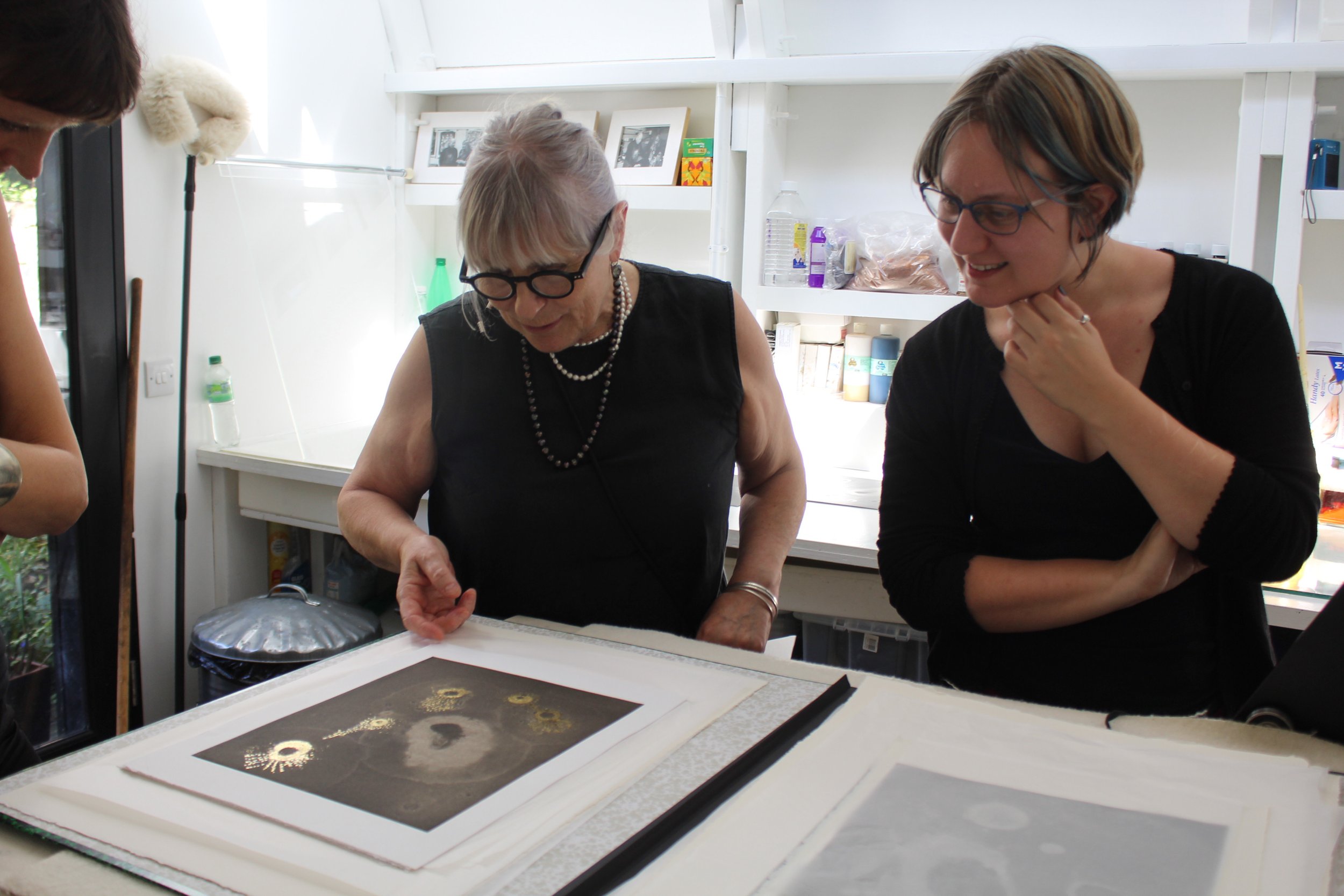Molecular architectures becomes modern alchemy
Following on from Phase 1 & 2 of the Molecular Architectures project, an arts/science collaboration between artist Susan Aldworth and synthetic organic chemist Dr Amanda Jarvis was created and facilitated by ASCUS with curatorial support from Griselda Goldsbrough, ASCUS Creative Producer, which took place from June - September 2023.
Aldworth was awarded the commission to collaborate with Dr Jarvis at Edinburgh University to make a series of experimental works in response to Dr Jarvis’ research. The brief had no defined output as it was the research stage of what is hoped to be a larger project.
The Science
The Jarvis group works on combining the best of biological catalysis and chemical catalysis to create more sustainable routes to the molecules society needs and wants for life – i.e. pharmaceuticals, plastics, agrochemicals – by trying to design completely new-to-nature active sites in proteins. Their long-term aim is to develop more sustainable catalytic chemistry using either more abundant and easily accessible metals or improving the atom efficiency of overall organic transformations. 85% of all products manufactured involves catalysis, and their research is looking for ways to find ways to transform the bonds in more abundant metals to deliver synthetic methods to improve the environmental sustainability of organic chemistry. The hope is that the use of heavier, rarer and more expensive metals such as Lithium, Rhodium and Platinum which are hard to mine and devastate the environment, could be replaced by more abundant metals like iron.
The Art
This research reminded Aldworth of the medieval chemical science and speculative philosophy of ALCHEMY where alchemists dreamed of the transmutation of base metals into GOLD. Alchemy is the foundation of modern chemistry and led to the development of the Modern Periodic Table. Aldworth decided to work in etching, an artform which she felt could express the energy of catalysis and to visualise the invisible. So much of chemistry is invisible and its practice and methodology relies on received knowledge like the periodic table.
To mirror the ambition of Jarvis’ laboratory to replace expensive metals by new reactions in base metals, Aldworth began her experiments by switching from copper and zinc etching plates -which are expensive - to steel etching plates which are 95% cheaper and have a very hard surface. Initial experiments showed that steel etched well with nitric acid but the plate surface texture did not allow for pure whites. By throwing chemicals into the aquatint resin before it was fired onto the plate surface, Aldworth developed ways to show chemical reactions – she wanted the imagery to capture a moment of chemical reaction. Aldworth would later use white chalk and hair and threads on the surface of the plates to achieve a white marks, and a visual equivalence of catalysis.
The experiments continued in 2 visits by Aldworth to Jarvis’ laboratory. Jarvis mixed different chemicals over the 4 days (nitric acid, formic acid, copper sulphate and Aqua Riga) for Aldworth to use to etch her steel plates in the laboratory. The artist’s studio and the laboratory merged as sites of experimentation. Aqua Riga (an equal mix of 100% nitric acid and hydrochloric acid) was used by alchemists to dissolve gold. It had a strange effect on the steel plates creating white imagery which didn't show up in the printing. Aldworth would later apply gold leaf to some of the prints to suggest the relationship with alchemy.
Once back in her studio, Aldworth printed from the 13 steel plates with surprising and exciting results. The etchings seemed to be visual equivalents of Jarvis’ research into catalysis. Aldworth produced 54 prints from 13 plates in this experimental suite. The commissioners were very excited by the results of this research project, and are looking for funds to plan to develop a Stage 2 for the project.
















